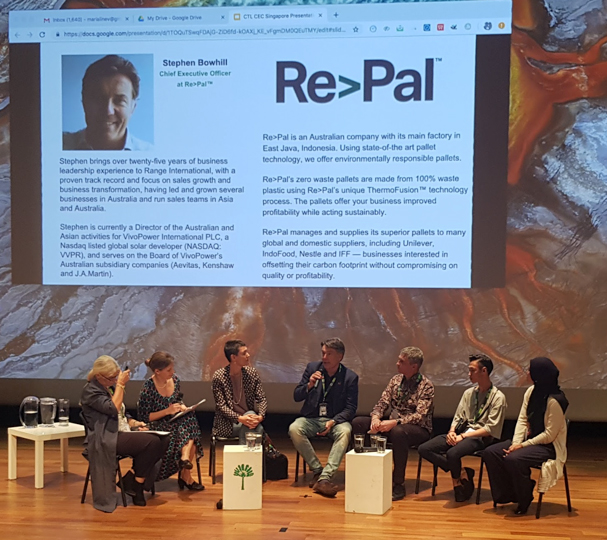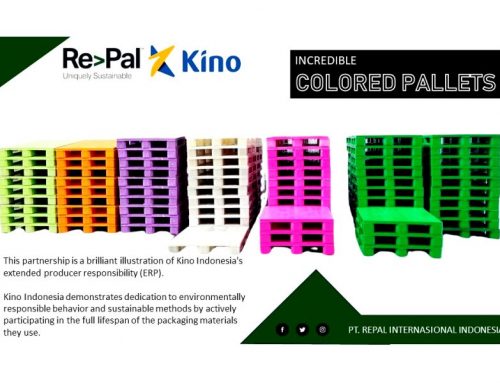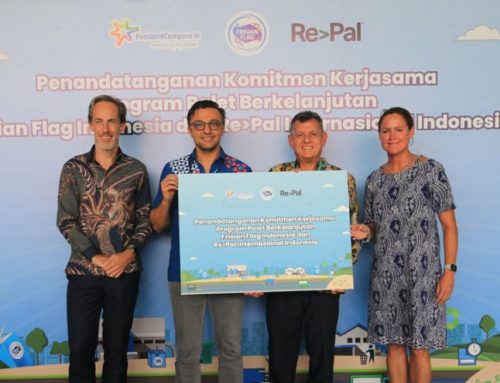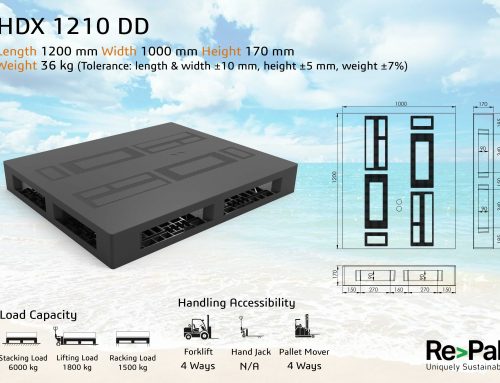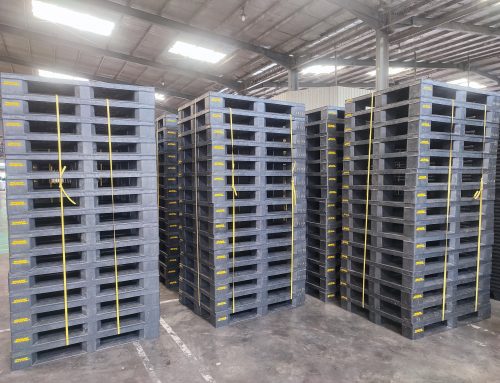On 29th November in Singapore, The Circular Economy Club (CEC) hosted a global event to screen the first circular economy documentary film. Our CEO, Stephen Bowhill appeared as a guest on the panel for this screening of ‘Closing the Loop’. This fantastic film reminds us how just how important our business is to achieving a world where we have zero waste.
Please explain why your business is circular and how you started doing this?
The founder of the business, Matthew Darby, wanted to find a solution to the accumulation of waste plastics. He noted that most plastics at that stage 15 years ago were simply being thrown away. Single use, throw away. No circularity, no recycling.
Our Re>Pal business is part of a circular solution and circularity in supply chain is now being talked about globally. I believe that we offer a circular solution in two ways. Firstly we manufacture pallets from 100% waste plastic – this is mixed waste plastic and because we have a patented solution to bind plastics together through “ThermoFusion” we are not limited to only one waste stream. Secondly because of this flexibility of waste stream, we also have the potential to introduce client’s waste plastic materials into the recycling pallet solution. This might help them with disposal/re-use instead of the waste plastic being incinerated or sent to landfill. When the pallets have reached the end of useful life or have been damaged, where it is economical to send them to our factory in East Java, we can use these disposed pallets as our raw materials. We shred them and mix with new waste plastic to enable a circularity for the pallets’ end of life.
In which ways has applying circular economy principles been profitable for your business or given you a competitive advantage?
Our business uses mixed waste plastic so this means that there is a low energy feedstock as raw material, as the plastic has already been made. It means that the carbon emissions are also mostly embedded already in the product so it takes little energy to create a our Re>Pal pallet product compared to new timber or new virgin plastic. Increasingly prospective clients are looking at LifeCycle Assessments in their supply chain to determine product selection and they often have ‘top down’ sustainability goals such as ‘zero waste’ or ‘sustainable living’.
What are the key challenges or the most important enabling tools to succeed on this circular journey?
The most important enabling tool is for any company to have a top down sustainability goal. And then the willingness for procurement teams to agree with the sustainability teams that there might be a need to ‘pay for sustainability’.
Reusing and introducing a circular model takes effort today and might not be the absolutely cheapest solution. Consumers and companies need to consider that the cheapest solution might not have the lowest or most sustainable footprint.
Innovation and collaboration and open conversations are the keys to success here.
Do you think “collaboration and sharing” within this new systems thinking approach is more important than before? …Why or why not? Think about impact on Supply Chains, IP,…
Collaboration is important between FMCG companies and the manufacturers of their raw materials and including end of life or end of useful life considerations at the product design stage. End of useful life recyclers can be brought into the loop as early as possible to determine what can be 100% upcycled back into products for the FMCG company or recycled by the recycler into other assets, such as Re>Pal pallets.
How have the Circular Economy Principles changed the way you think about innovation within your business?
We have been an early adopter of reduce / recycle / reuse so I think it’s in the company’s DNA to look to try and help clients as far as possible with investigating how we can help them close loops in their efforts to recycle / upcycle.
What do you think would be the best catalyst for fast, large scale adoption of the circular model? Which stakeholders do you think will most likely drive the transition? Governments? Corporates? Consumers? Others?
Governments can enable with tariffs on landfill or policies to take back at end of life. However if the infrastructure to recycle and reuse is not made easy, if there is too much ‘stick’ and not enough ‘carrot’ the inadvertent consequence of this will see illegal dumping prevail. We need to give incentives consumers to do the right thing, separate waste, recycle; show the value to collectors of waste through having more solutions in the market such as Re>Pal and consumers reward companies that have a consciousness on sustainable product lifecycle and procurement teams reward companies such as Re>Pal for a zero waste, sustainable product. Companies and consumers with the same values need to collaborate for their mutual success.
What can we do on a personal level to become more circular?
In my view within 5-10 years time companies that don’t have a circular model will simply be the outliers and they will struggle to sell even a cheap but non-sustainable product. In 10 years time the children that are living and breathing a more sustainable approach through education will be tomorrow’s consumers. Personally recycling organic waste into a worm farm is a great way to reduce what gets thrown away, but I’m not recommending eating the worms!!

